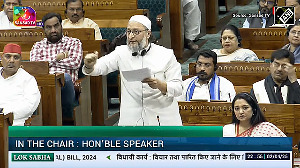Should they prioritise reducing debt or push forward with growth? The proposed safeguard duty and domestic demand might shape the decision.
Ishita Ayan Dutt/Business Standard reports.

The “weaponisation” of economic activity — through tariffs and sanctions — is now a reality, with countries leveraging these tools strategically, External Affairs Minister S Jaishankar said at the Raisina Dialogue recently.
Speaking at the strategic affairs conference hosted by the external affairs ministry and the Observer Research Foundation in New Delhi, Jaishankar emphasised that India would have to negotiate the best possible deals because “governments fight for their businesses”.
He added, “You’re fighting for your comprehensive national power, of which business makes a very important contribution.”
An example of this fight for businesses was demonstrated last week, when the Directorate General of Trade Remedies (DGTR), under the commerce and industry ministry, recommended a 12 per cent safeguard duty for 200 days on certain steel products.
The measure aims to protect the domestic steel industry from “serious injury” caused by a surge in imports.
The recommendation now awaits approval from the Department of Revenue in the finance ministry.
Significance of steel
Steel is the backbone of an economy, serving as a critical input for infrastructure, construction, automotive, defence, and manufacturing industries.
As India grows, so will the demand for steel.
Producers like JSW Steel, Tata Steel, ArcelorMittal Nippon Steel India (AM/NS India), and Jindal Steel and Power (JSPL), which are at the forefront of a private-sector capital expenditure push, have aligned their plans with India’s target of achieving a 300 million tonne (mt) steel production capacity.
According to Icra estimates, Tata Steel, JSW Steel, AM/NS India, JSPL, and public sector NMDC Steel would add 50 mt of capacity between FY21 and FY28, of which 37.1 mt was added by FY24.
However, a surge in low-cost imports, which has depressed steel prices, has made the industry cautious about expansion.
Whether the proposed 12 per cent safeguard duty will provide enough relief to encourage continued investment remains a subject of debate.
The ‘injury’
The DGTR’s recommendation on certain non-alloy and alloy flat steel products is based on an application filed by the Indian Steel Association (ISA) on behalf of its members — AM/NS India, JSW Steel, JSPL, and SAIL.
The application sought protection against surging imports of key products such as hot rolled coil (HRC), cold rolled coil and sheets, and various flat steel products.
About 48 per cent of total imports into India in calendar 2024 was accounted for by HRC, which is widely used in automotive and appliances.
The surge in imports — primarily from South Korea, Japan, Vietnam (countries with which India has free trade agreements), and China — has turned India into a net importer of steel.
The DGTR noted that the large influx of cheaper imports has forced domestic producers to slash their prices to remain competitive and prevent further increase in imports, significantly impacting their profitability.
Price impact
The steel industry wanted a 25 per cent safeguard duty, with internal expectations of an 18-20 per cent levy.
While the recommended 12 per cent duty falls short of these demands, it is still expected to lead to price increases.
Ritabrata Ghosh, vice president (Corporate Ratings and Industry Research) at Icra, estimates that the safeguard duty will push average HRC prices up by 7-8 per cent compared to FY25, improving per-tonne earnings before interest, taxes, depreciation, and amortisation (Ebitda) to $135-$140.
Sehul Bhatt, director of research at Crisil Intelligence, also said that the provisional safeguard duty would provide pricing support to local manufacturers in the first half of fiscal 2026.
The government had acted proactively this time round, Ghosh said. “In 2015, when a safeguard duty was imposed, the industry was already on its knees,” he said.
“The average Ebitda per tonne was just $50 back then, compared to $110 per tonne now.”
A sense of déjà vu
The steel industry has seen this scenario before — a deluge of supply from China, pressure on prices and margins, followed by a safeguard duty.
In September 2015, the Indian government had imposed a 20 per cent safeguard duty on hot rolled flat products for 200 days after China flooded global markets with discounted steel.
In a way, that shaped the global landscape for the industry.
Now, history seems to be repeating itself.
Protecting turf
Protectionist measures in the steel sector have been rising since 2015-16 when low-cost Chinese imports shook the industry.
The Donald Trump administration has now announced a 25 per cent additional duty on steel imports from March 12, 2025, revoking previous relaxations and exemptions, and sparking potential retaliatory measures from other economies.
According to the DGTR, global trade remedy actions on steel have surged from 2019 to 2024 in major global markets.
Between 2011-2013, an average of 77 steel-related investigations were initiated. That number jumped to 117 in 2015-16 and reached 129 between 2019 and 2023.
In just the first nine months of 2024, 67 new anti-dumping investigations were launched globally — the highest since the 2015-16 overcapacity crisis.
More than 70 per cent of steel-related trade remedy actions between 2019-23 targeted flat steel products.
China’s role in global steel trade remains a major factor.
Its oversupply and aggressive pricing have contributed to protectionist actions worldwide, affecting India’s steel export prospects. In FY24, India exported 9.5 mt of steel, but provisional data from BigMint suggests this could drop to 6.5 mt in FY25.
To deleverage or expand?
At least two major steel producers said that the 12 per cent safeguard duty might encourage them to plan their next phase of expansion.
However, decisions will depend on capital allocation strategies, said a top official from a steel company.
If China cuts production due to global tariffs and no longer needs to export to India, the industry may feel more confident about expanding, said a senior official at a steel company.
Some companies have already delayed capacity expansion due to the past 18 months of stress, he added.
Post-Covid, steel prices increased as global economies pumped money into the under-invested infrastructure to emerge from the pandemic-induced slowdown.
According to BigMint data, HRC prices peaked at Rs 76,025 per tonne in April 2022, prompting steel companies to deleverage and initiate expansion plans.
However, the Russia-Ukraine war soon disrupted markets, and by December 2022, HRC prices had tumbled to Rs 53,950 per tonne.
Indian steelmakers now face a pivotal decision: Should they prioritise reducing debt or push forward with growth?
The proposed safeguard duty and domestic demand might shape the decision.












 © 2025
© 2025